 Ever wonder who this street in Old Town Goleta is named after? We did. And we found out about one of Goleta’s most motivated immigrants. Stephen Rutherford was a sharp real estate investor and he played a major role in the development of Goleta, but very little was written about him.
Ever wonder who this street in Old Town Goleta is named after? We did. And we found out about one of Goleta’s most motivated immigrants. Stephen Rutherford was a sharp real estate investor and he played a major role in the development of Goleta, but very little was written about him.
 Like so many stories in Goleta, this one starts with Ellwood Cooper. In 1872 he wrote a letter to a friend in Scotland and mentioned he needed some reliable men to work planting eucalyptus trees on his new ranch in Goleta. Before long, several young men arrived at the Cooper Ranch looking for work. Among them was a fellow named John Rutherford. Later that same year, his younger brother Stephen followed, making the long Edinburgh to Goleta voyage. A three month journey around the Cape Horn.
Like so many stories in Goleta, this one starts with Ellwood Cooper. In 1872 he wrote a letter to a friend in Scotland and mentioned he needed some reliable men to work planting eucalyptus trees on his new ranch in Goleta. Before long, several young men arrived at the Cooper Ranch looking for work. Among them was a fellow named John Rutherford. Later that same year, his younger brother Stephen followed, making the long Edinburgh to Goleta voyage. A three month journey around the Cape Horn.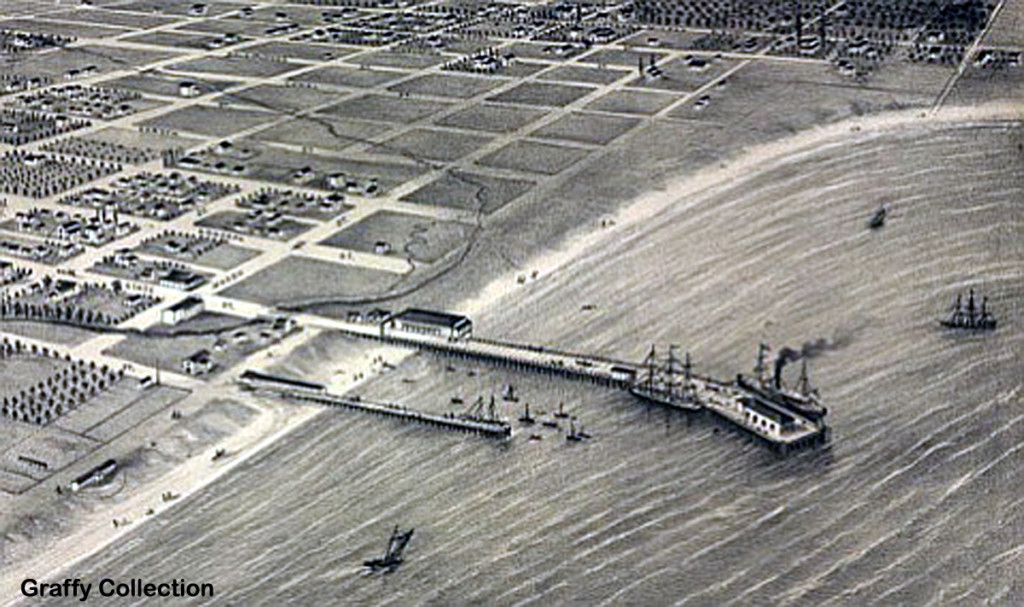 The 24 year old Stephen Rutherford arrived at a brand new Stearns Wharf aboard the steamer Orizaba. Walker Tompkins reports that he walked down the beach, all the way to Carpinteria looking for work. Having no luck, he made his way back up to Santa Barbara where he worked as a stone mason for a while. Soon he got a job working for Col. Hollister at the Glen Annie Ranch and he made the move out to Goleta.
The 24 year old Stephen Rutherford arrived at a brand new Stearns Wharf aboard the steamer Orizaba. Walker Tompkins reports that he walked down the beach, all the way to Carpinteria looking for work. Having no luck, he made his way back up to Santa Barbara where he worked as a stone mason for a while. Soon he got a job working for Col. Hollister at the Glen Annie Ranch and he made the move out to Goleta. Within the first year of his arrival, Stephen slept under a large oak on the Dos Pueblos Ranch and he decided he would one day be the owner of such a fine estate. That was his ambition, and through his hard work, it became his reality.
Within the first year of his arrival, Stephen slept under a large oak on the Dos Pueblos Ranch and he decided he would one day be the owner of such a fine estate. That was his ambition, and through his hard work, it became his reality.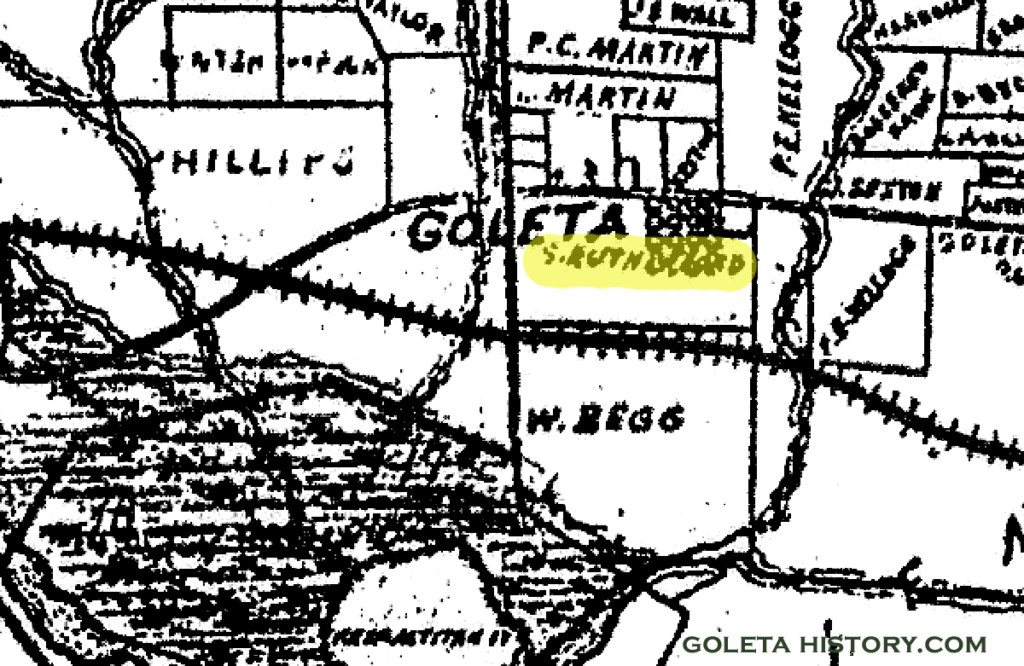 In 1873, Stephen was offered a great deal on some choice real estate. His foreman at the Glenn Annie Ranch, George Long, took a liking to him. He sold Rutherford 100 acres on the south side of what is now Hollister Avenue, from San Jose Creek to Fairview Avenue.
In 1873, Stephen was offered a great deal on some choice real estate. His foreman at the Glenn Annie Ranch, George Long, took a liking to him. He sold Rutherford 100 acres on the south side of what is now Hollister Avenue, from San Jose Creek to Fairview Avenue. 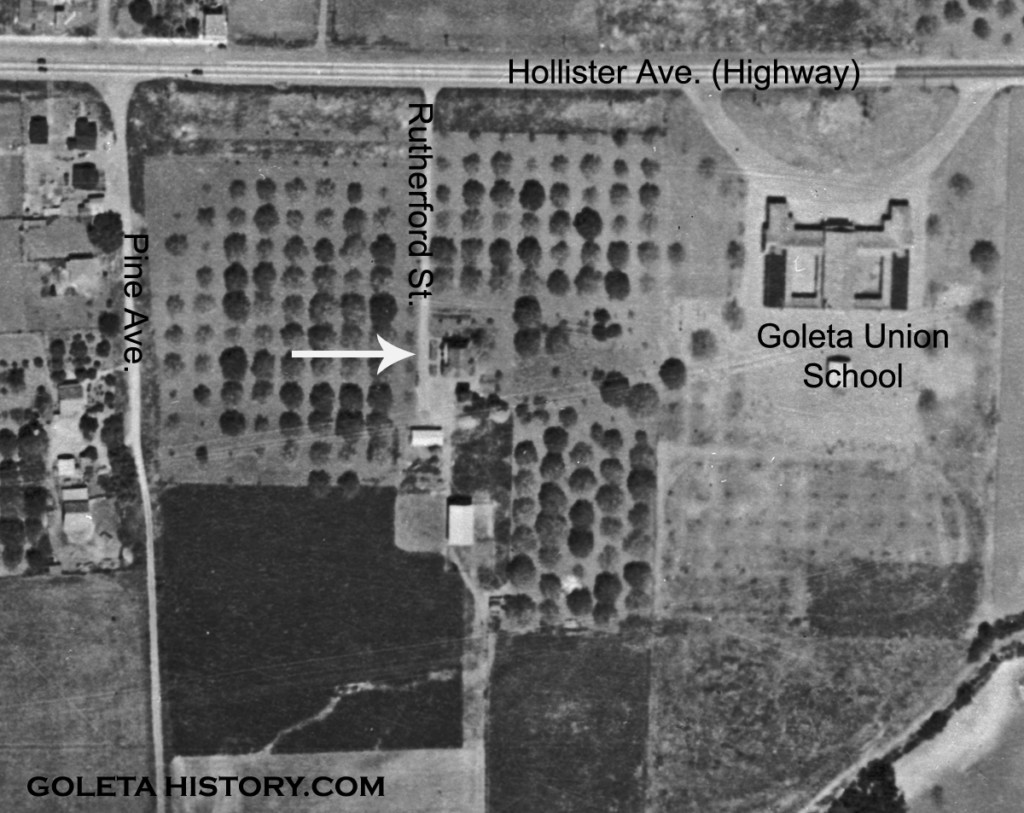 He built a two story frame house on what is now Rutherford Street, at the northwest corner of the Michelle apartments. This photo from 1928 shows this first house, surrounded by a small orchard.
He built a two story frame house on what is now Rutherford Street, at the northwest corner of the Michelle apartments. This photo from 1928 shows this first house, surrounded by a small orchard.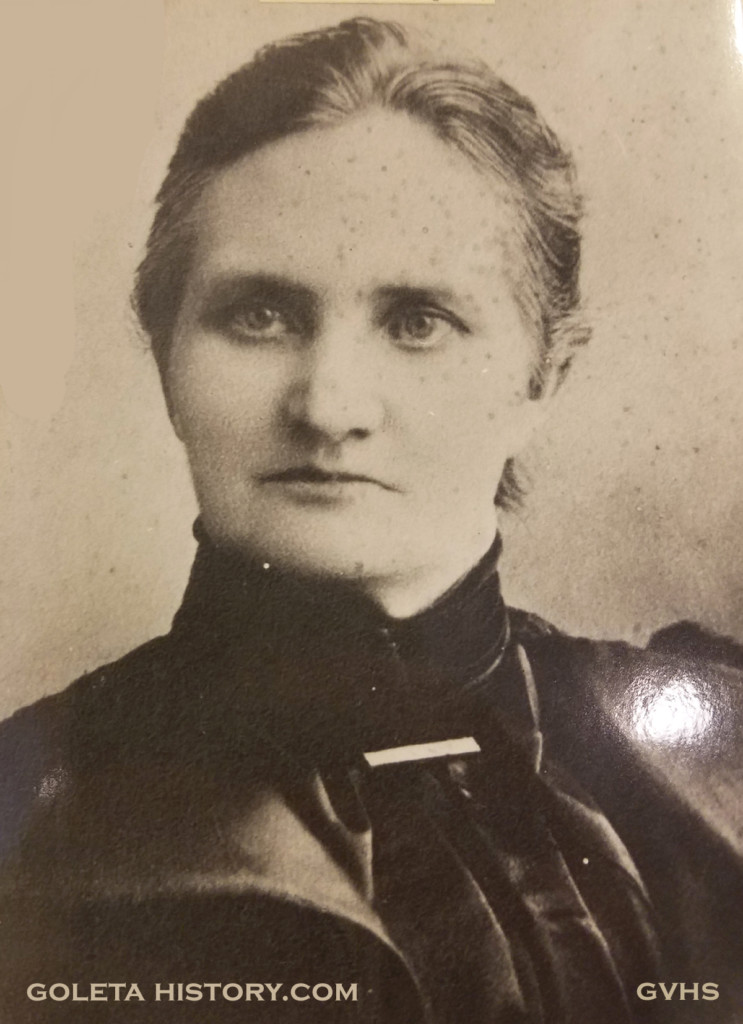 Having built a secure home, he wrote back to Scotland to convince his childhood love from Glasgow, Agnes Lawrie, to come join him. She did.
Having built a secure home, he wrote back to Scotland to convince his childhood love from Glasgow, Agnes Lawrie, to come join him. She did.
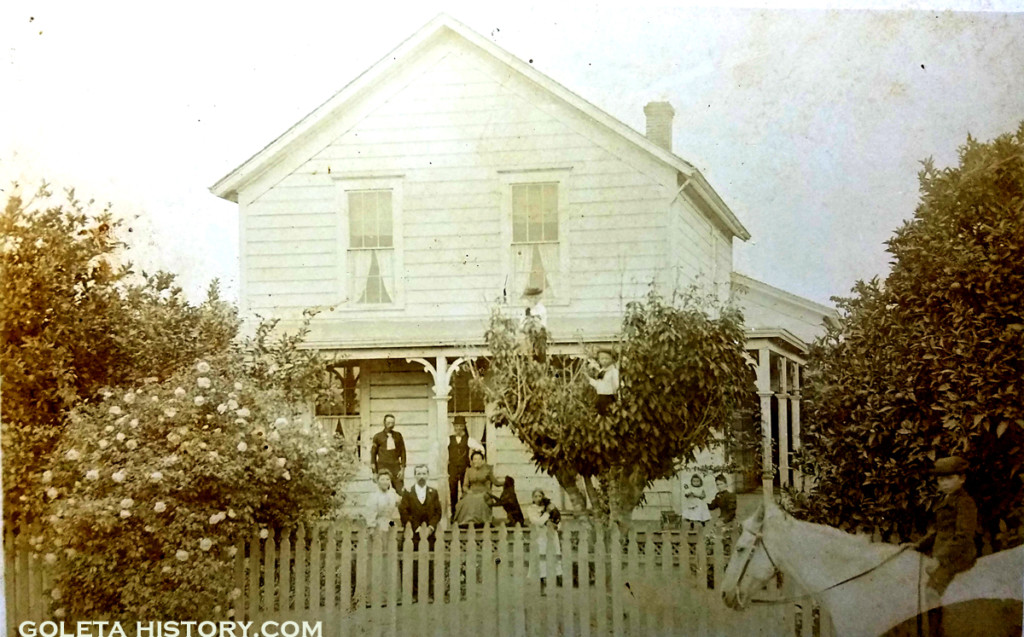 They were married as soon as she arrived and before long, they had 6 children. They called this their La Patera Ranch, due to the proximity of the slough. Looks like a happy home with dogs on the porch and a kid on a horse in the foreground.
They were married as soon as she arrived and before long, they had 6 children. They called this their La Patera Ranch, due to the proximity of the slough. Looks like a happy home with dogs on the porch and a kid on a horse in the foreground.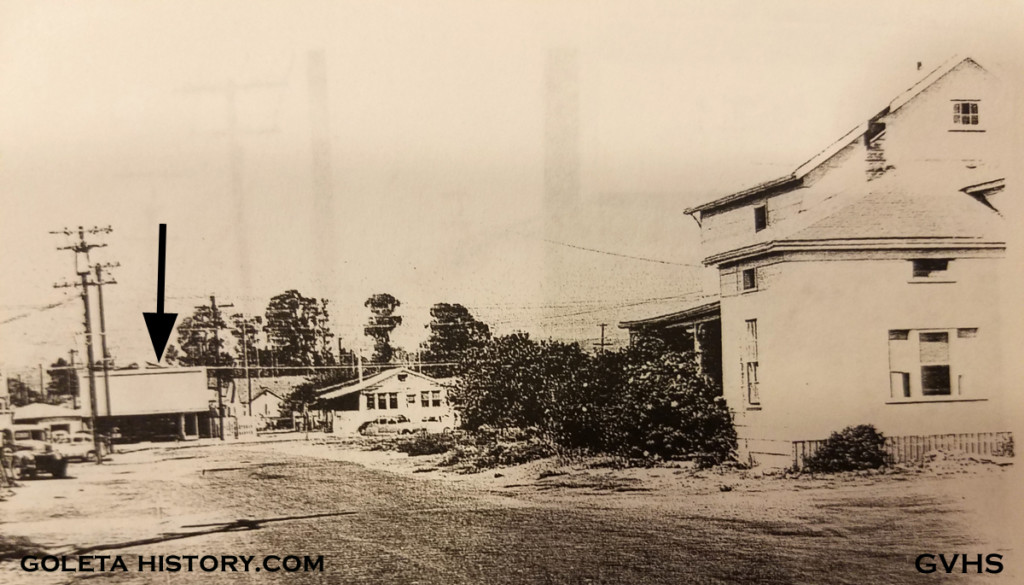 This is the most recent photo we could find of the Rutherford house on Rutherford Street, from 1953. The black arrow points to what today is O’Reilly Auto Parts on Hollister Avenue. This house was demolished in 1963 to make way for the Michelle Apartments, that are still there today.
This is the most recent photo we could find of the Rutherford house on Rutherford Street, from 1953. The black arrow points to what today is O’Reilly Auto Parts on Hollister Avenue. This house was demolished in 1963 to make way for the Michelle Apartments, that are still there today.
Rutherford was a successful farmer. He worked hard and saved his money and in 1884, he purchased over 1,000 acres at Dos Pueblos Canyon from the widower of Rosa Den, G.C. Welch.
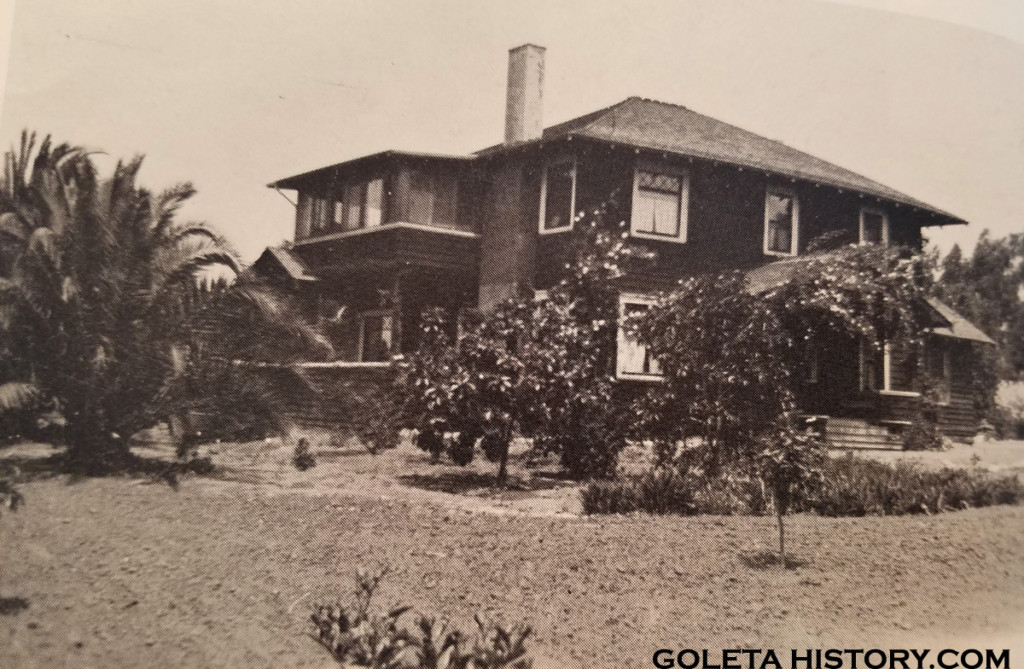 Rutherford bought 5 sections along Dos Pueblos creek including the Den’s “home ranch”. By 1888 Rutherford had built the “Big House”, a large redwood home just northwest of the old Den adobe.
Rutherford bought 5 sections along Dos Pueblos creek including the Den’s “home ranch”. By 1888 Rutherford had built the “Big House”, a large redwood home just northwest of the old Den adobe.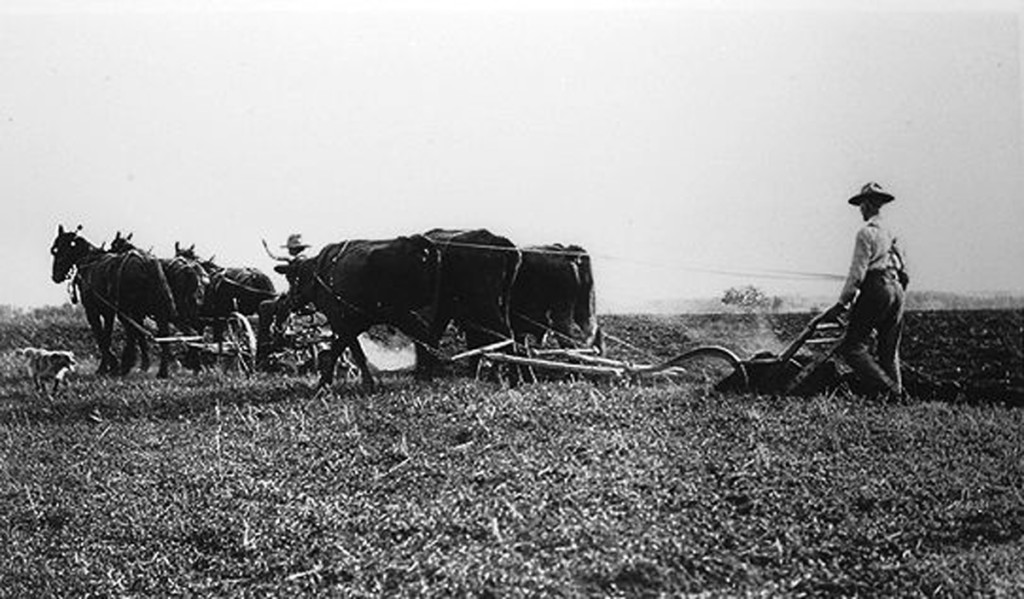 On his new ranch, Rutherford grew a huge crop of potatoes, corn and hay, and planted walnut and apricot orchards.
On his new ranch, Rutherford grew a huge crop of potatoes, corn and hay, and planted walnut and apricot orchards.  Stephen and Agnes, (white arrows above), had two more children here, George and Lawrie. George grew up to farm the historic Ortega ranch at Refugio Canyon. Lawrie was killed in the battle of Argonne Forest, becoming Goleta’s first casualty of World War I.
Stephen and Agnes, (white arrows above), had two more children here, George and Lawrie. George grew up to farm the historic Ortega ranch at Refugio Canyon. Lawrie was killed in the battle of Argonne Forest, becoming Goleta’s first casualty of World War I. 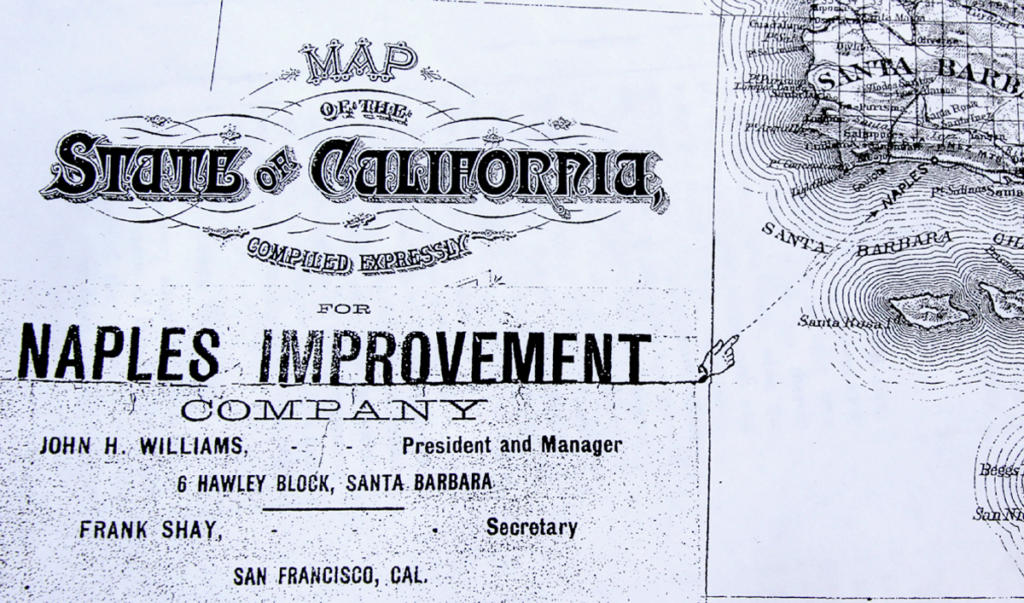 In 1887, Rutherford sold a 30 acre parcel of his Dos Pueblos ranch to an ambitious developer named John Williams. He sold him the parcel that contained the old Den adobe. Williams had big plans for the land, a city by the sea he named Naples. But that’s a whole different story…
In 1887, Rutherford sold a 30 acre parcel of his Dos Pueblos ranch to an ambitious developer named John Williams. He sold him the parcel that contained the old Den adobe. Williams had big plans for the land, a city by the sea he named Naples. But that’s a whole different story…
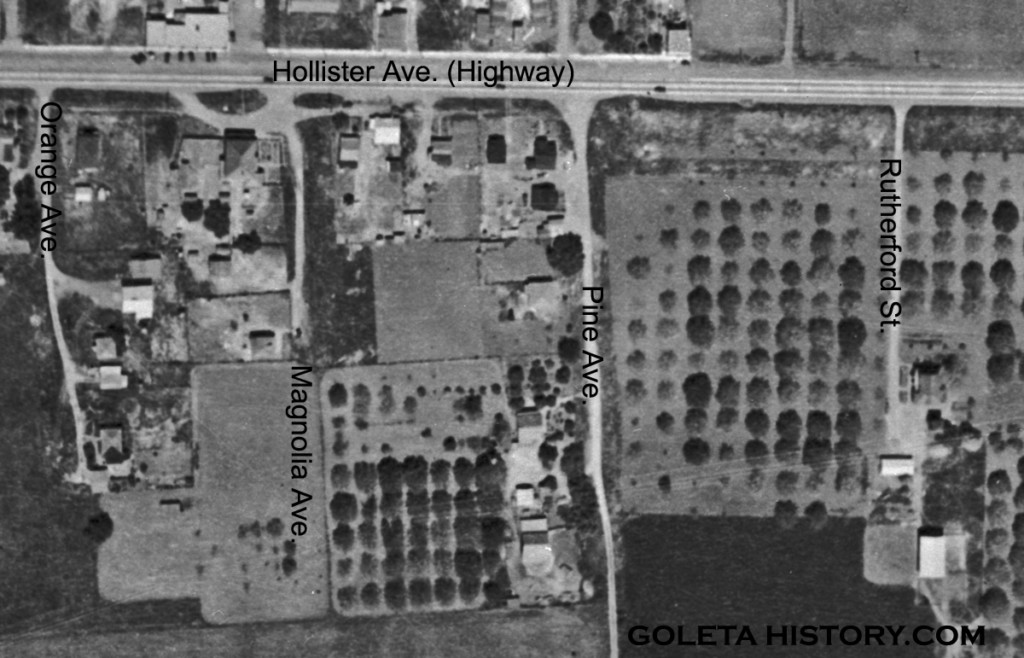 In 1888, Stephen sold 30 acres of his La Patera Ranch, between Goleta Union School and Fairview Avenue, for a subdivision. It would be Goleta’s first big development with named streets; Orange, Magnolia, Pine, Gaviota, Dawson and of course, Rutherford. But the economy took a turn for the worst, and the development remained a bean field for several more years.
In 1888, Stephen sold 30 acres of his La Patera Ranch, between Goleta Union School and Fairview Avenue, for a subdivision. It would be Goleta’s first big development with named streets; Orange, Magnolia, Pine, Gaviota, Dawson and of course, Rutherford. But the economy took a turn for the worst, and the development remained a bean field for several more years.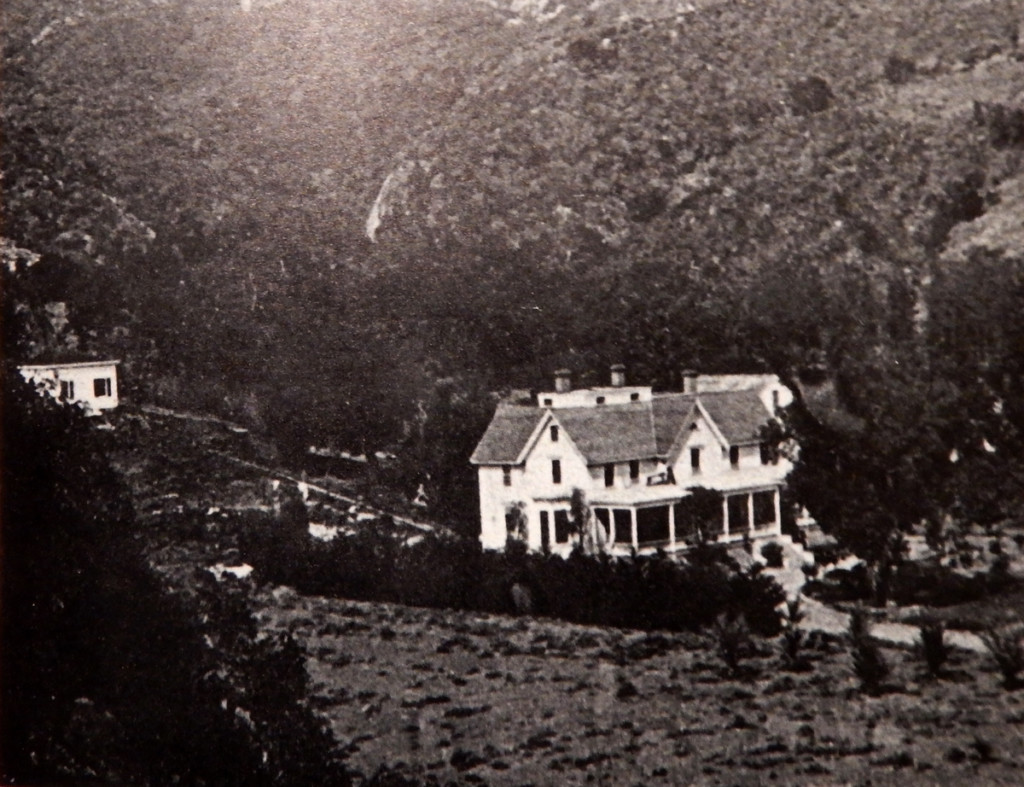 In 1890, Annie Hollister was literally kicked out of her mansion at Glenn Annie Ranch due to losing a long court battle with the Den family. Shortly after her departure, the mansion mysteriously burst into flames. Stephen Rutherford and one other man were the only people there to try to save it, but they unfortunately failed.
In 1890, Annie Hollister was literally kicked out of her mansion at Glenn Annie Ranch due to losing a long court battle with the Den family. Shortly after her departure, the mansion mysteriously burst into flames. Stephen Rutherford and one other man were the only people there to try to save it, but they unfortunately failed.
In 1897, Stephen Rutherford and Frank Kellogg financed the drilling of a test well on the Bell Ranch near Las Armas Canyon. A local geologist had predicted an oil strike at this location, but after drilling to a depth of 1000 feet, the wildcat well was abandoned as a duster. The team then moved their drilling rig up to the Naples town site. In 1900, three wildcat wells were dug with moderate success, but not enough to justify further exploration.
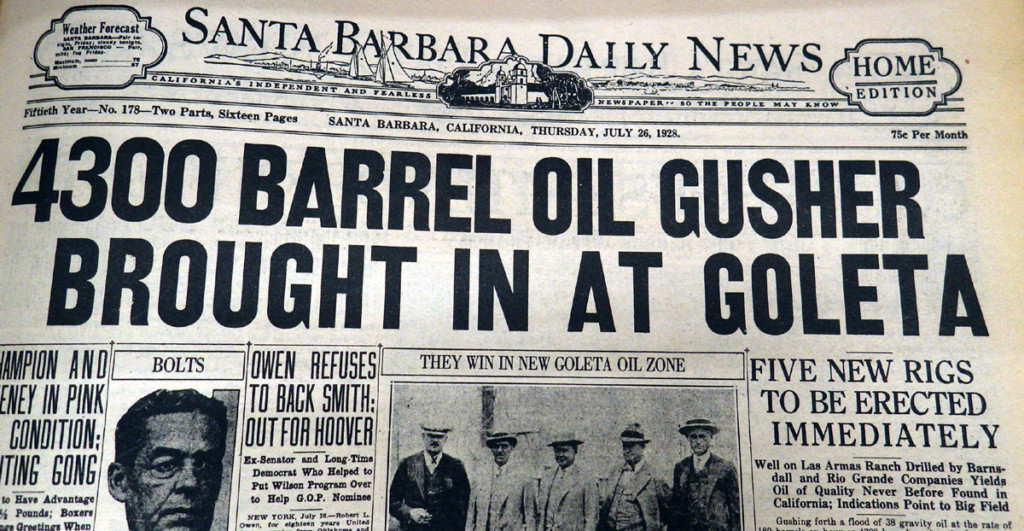 Rutherford and Kellogg were in the right places, but the technology just wasn’t advanced enough to strike it rich. About 30 years later, in 1928, 100,000,000 barrels of quality crude oil were pulled from the ground at the Bell Canyon site, the exact same spot as the Rutherford/Kellogg effort, but 2,500 feet deeper. Same story for the Naples site, as 40 years later a new slant drilling technology was used. From the old Rutherford/Kellogg wells, Signal Oil company discovered a huge oil field off the coast of Naples, that still holds untapped resources to this day.
Rutherford and Kellogg were in the right places, but the technology just wasn’t advanced enough to strike it rich. About 30 years later, in 1928, 100,000,000 barrels of quality crude oil were pulled from the ground at the Bell Canyon site, the exact same spot as the Rutherford/Kellogg effort, but 2,500 feet deeper. Same story for the Naples site, as 40 years later a new slant drilling technology was used. From the old Rutherford/Kellogg wells, Signal Oil company discovered a huge oil field off the coast of Naples, that still holds untapped resources to this day. In the early 1900’s Stephen Rutherford bought 500 acres on the coast, including the Refugio Cove. Later, one of his sons would turn it into a popular campground and plant the iconic palm trees that we all enjoy today.
In the early 1900’s Stephen Rutherford bought 500 acres on the coast, including the Refugio Cove. Later, one of his sons would turn it into a popular campground and plant the iconic palm trees that we all enjoy today.
 In yet another real estate deal around the turn of the century, Stephen acquired a portion of the Hope Rancho and called it Arroyo Burro Creek Ranch. He farmed it for years and handed it down to one of his sons that renamed it Valle Verde, after his wife.
In yet another real estate deal around the turn of the century, Stephen acquired a portion of the Hope Rancho and called it Arroyo Burro Creek Ranch. He farmed it for years and handed it down to one of his sons that renamed it Valle Verde, after his wife. 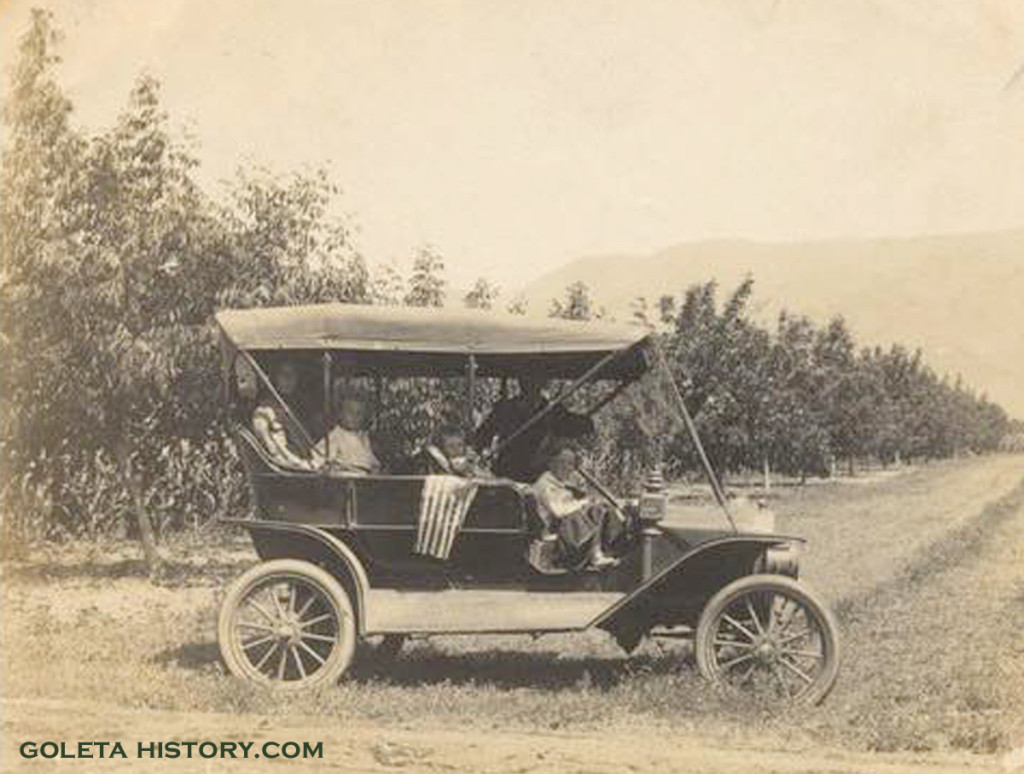 Between all the farming and real estate hustling, Stephen still had time for fun. Rutherford was one of the first Goleta residents to own a gas powered automobile!
Between all the farming and real estate hustling, Stephen still had time for fun. Rutherford was one of the first Goleta residents to own a gas powered automobile!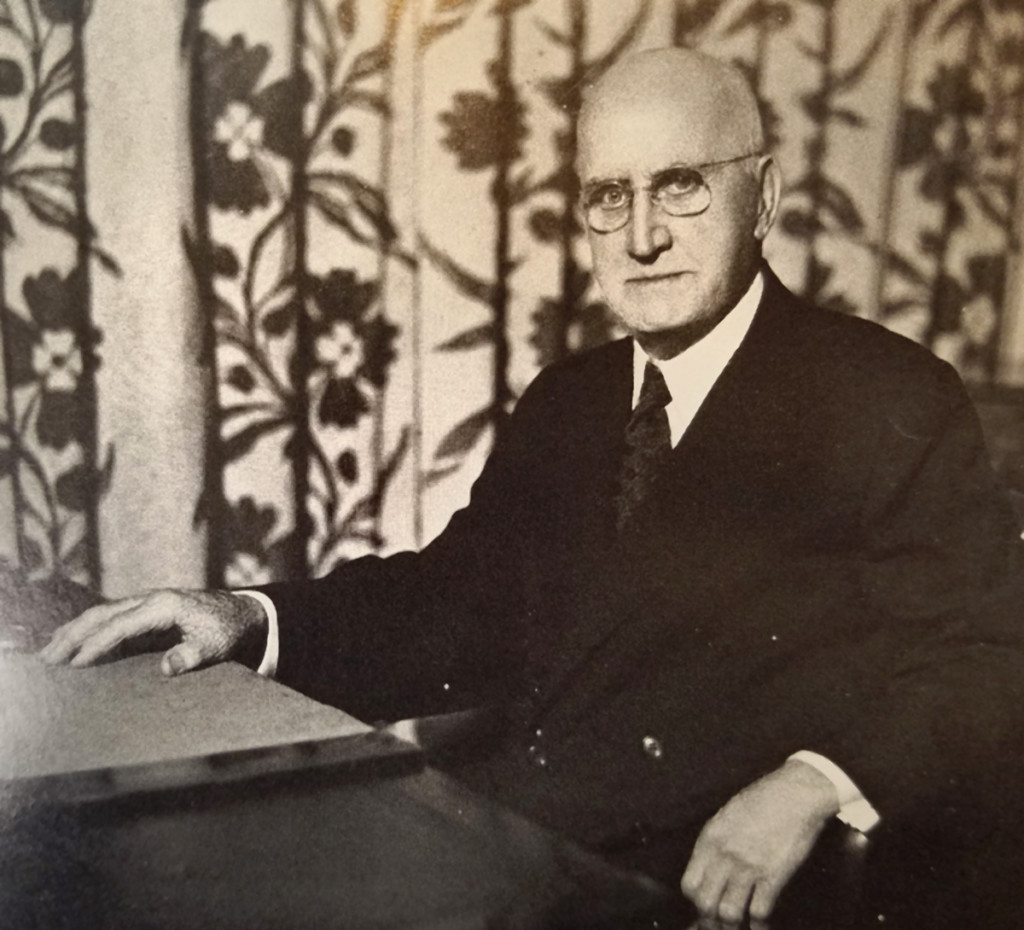 In 1917, oil tycoon Herbert Wylie was buying up land on the coast and he made Stephen an offer he couldn’t refuse.
In 1917, oil tycoon Herbert Wylie was buying up land on the coast and he made Stephen an offer he couldn’t refuse.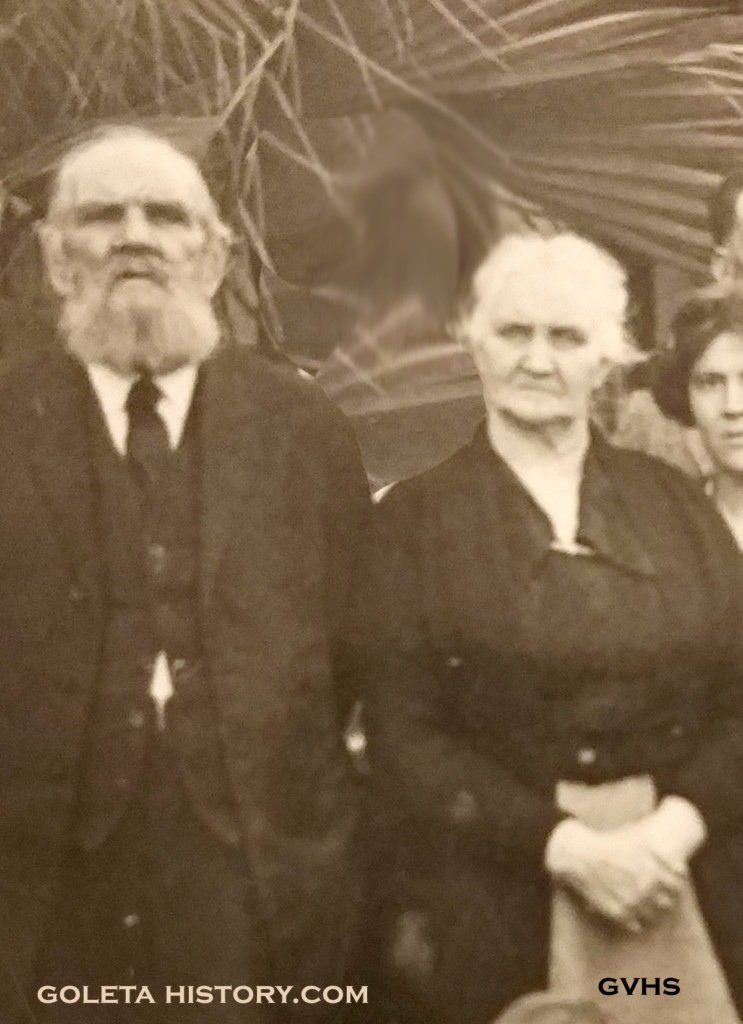 Stephen was getting up there in age, and there were reports of his depression about losing his young son in the war. So after much consideration, the Rutherfords decided to sell the ranch to Herbert Wylie.
Stephen was getting up there in age, and there were reports of his depression about losing his young son in the war. So after much consideration, the Rutherfords decided to sell the ranch to Herbert Wylie.
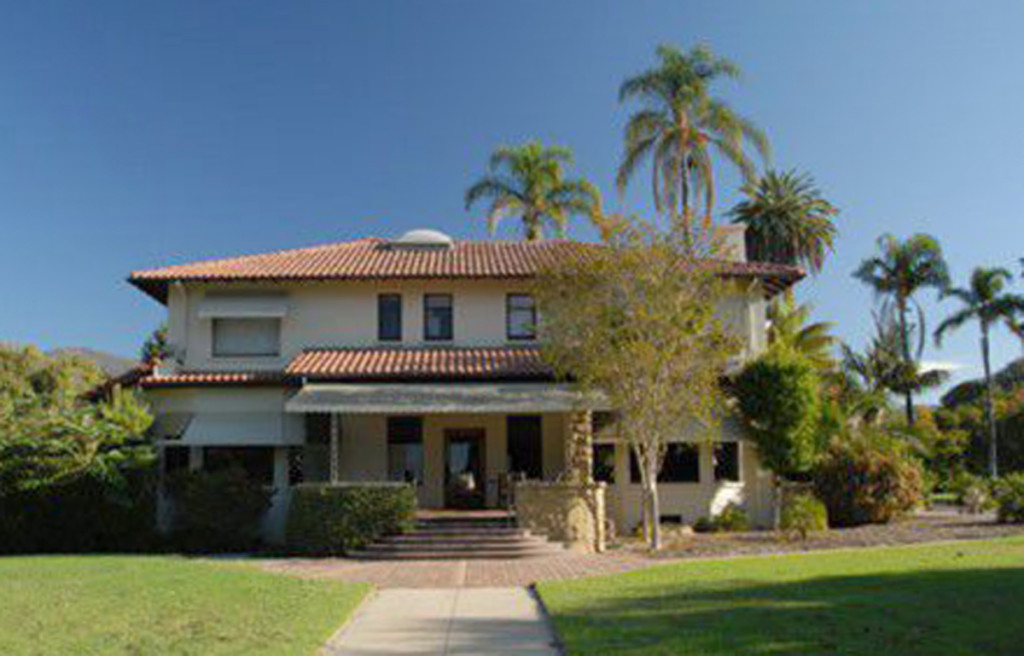 Wylie stripped Rutherford’s “Big House” down to its redwood bones and moved it 100 yards west. At the new location, Wylie built an impressive tile roofed mansion on the framework of Rutherford’s home, that still stands today at Dos Pueblos Ranch. Wylie also pulled out Rutherford’s walnut and apricot orchards and planted lemons.
Wylie stripped Rutherford’s “Big House” down to its redwood bones and moved it 100 yards west. At the new location, Wylie built an impressive tile roofed mansion on the framework of Rutherford’s home, that still stands today at Dos Pueblos Ranch. Wylie also pulled out Rutherford’s walnut and apricot orchards and planted lemons. That same year, Rutherford purchased 123 acres of farmland along Hollister Avenue between San Roque and Alamar Avenue. Owned by Dixey Thompson, it was a successful bean and walnut operation known as the Ontare Ranch, but Rutherford had another plan for this farm. He recognized the opportunity to profit from the new automobiles and the roadside business that they were creating.
That same year, Rutherford purchased 123 acres of farmland along Hollister Avenue between San Roque and Alamar Avenue. Owned by Dixey Thompson, it was a successful bean and walnut operation known as the Ontare Ranch, but Rutherford had another plan for this farm. He recognized the opportunity to profit from the new automobiles and the roadside business that they were creating. 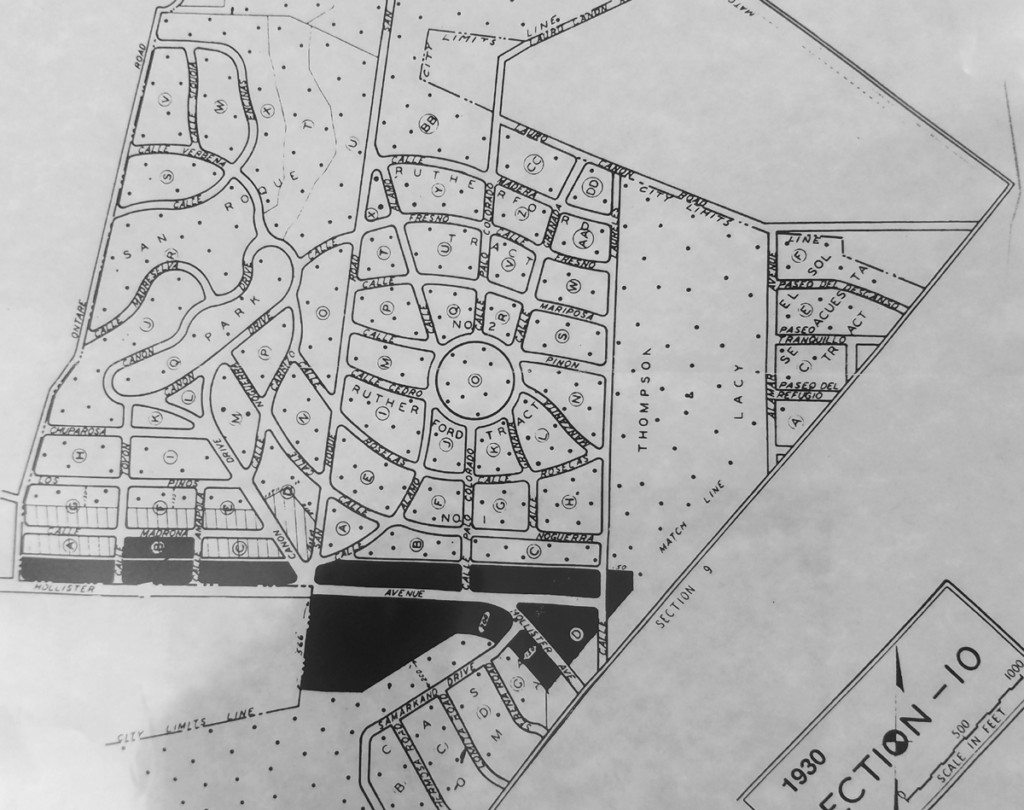 By 1923, Stephen had laid out the Rutherford Park subdivision, featuring curving streets radiating from Argonne Circle, named in honor of the battle that took his youngest son’s life. At the time, Santa Barbara’s city limits were at Mission Creek, but Stephen successfully lobbied for the city of Santa Barbara to annex his new tract.
By 1923, Stephen had laid out the Rutherford Park subdivision, featuring curving streets radiating from Argonne Circle, named in honor of the battle that took his youngest son’s life. At the time, Santa Barbara’s city limits were at Mission Creek, but Stephen successfully lobbied for the city of Santa Barbara to annex his new tract. 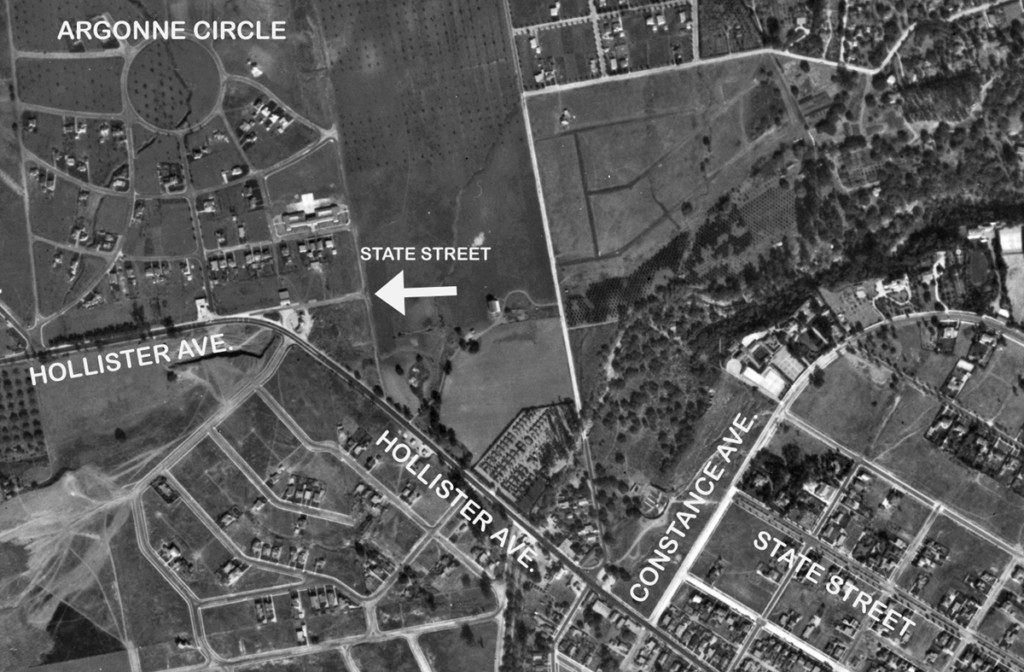 Another major change Rutherford influenced was the continuation of State Street. When he laid out Rutherford park, State Street ended abruptly at Constance Avenue, just before Mission Creek. Hollister Avenue was the main road coming from Goleta and it made a right turn at what is today De La Vina Street. It continued on as Hollister Avenue until it reached Mission Street, when it changed into De La Vina.
Another major change Rutherford influenced was the continuation of State Street. When he laid out Rutherford park, State Street ended abruptly at Constance Avenue, just before Mission Creek. Hollister Avenue was the main road coming from Goleta and it made a right turn at what is today De La Vina Street. It continued on as Hollister Avenue until it reached Mission Street, when it changed into De La Vina.
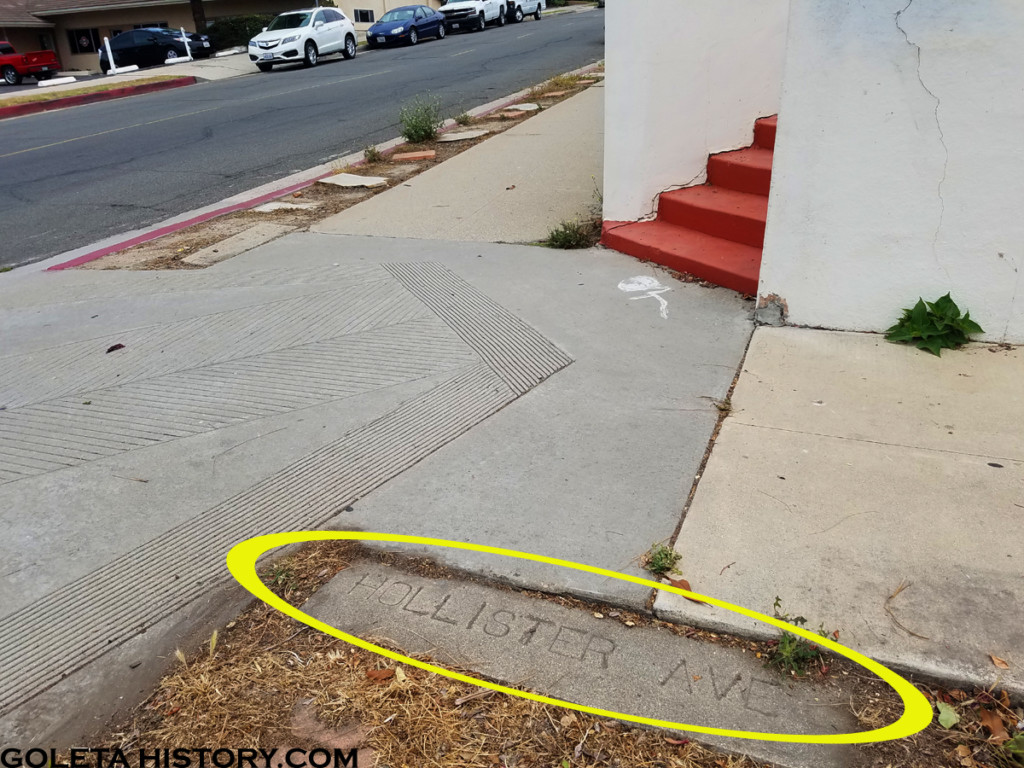 To this day, you can still find a slab of concrete the city saved with the inscription “Hollister Avenue” at the corner of Constance and De La Vina Streets!
To this day, you can still find a slab of concrete the city saved with the inscription “Hollister Avenue” at the corner of Constance and De La Vina Streets! 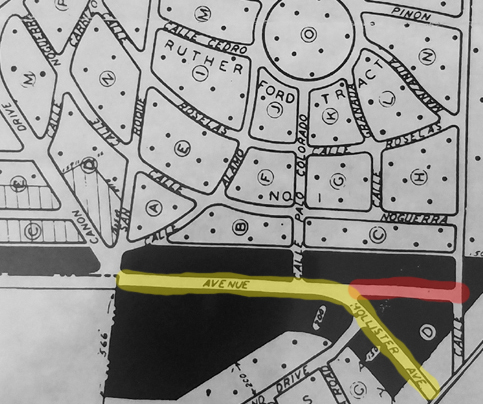 Rutherford knew State Street would someday be continued, and to make sure Santa Barbara’s main artery ran directly in front of his development, he planned and landscaped a one block commercial street running from the Hollister Curve to Calle Laureles and he named it….. State Street! This created what’s now called the De La Vina Wye.
Rutherford knew State Street would someday be continued, and to make sure Santa Barbara’s main artery ran directly in front of his development, he planned and landscaped a one block commercial street running from the Hollister Curve to Calle Laureles and he named it….. State Street! This created what’s now called the De La Vina Wye.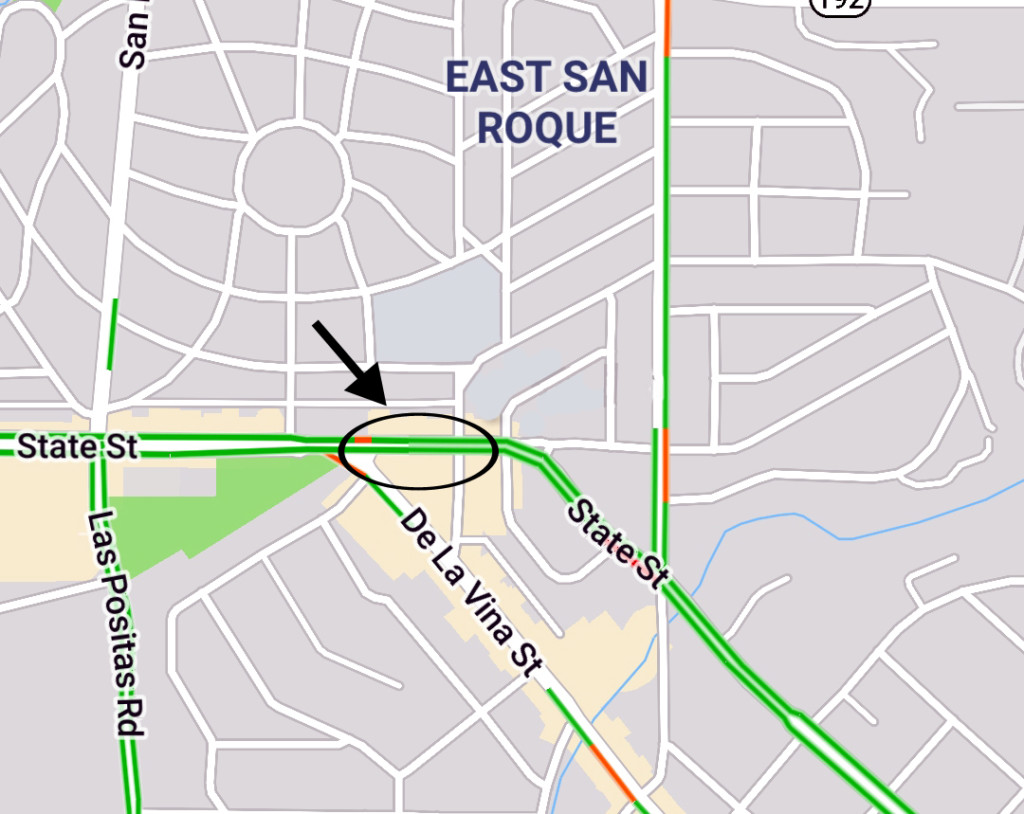 His plan finally paid off, but not until 1950, when the city finally made State Street connect Constance to Hollister. This little stretch of asphalt was a great stretch of foresight by Stephen Rutherford.
His plan finally paid off, but not until 1950, when the city finally made State Street connect Constance to Hollister. This little stretch of asphalt was a great stretch of foresight by Stephen Rutherford.
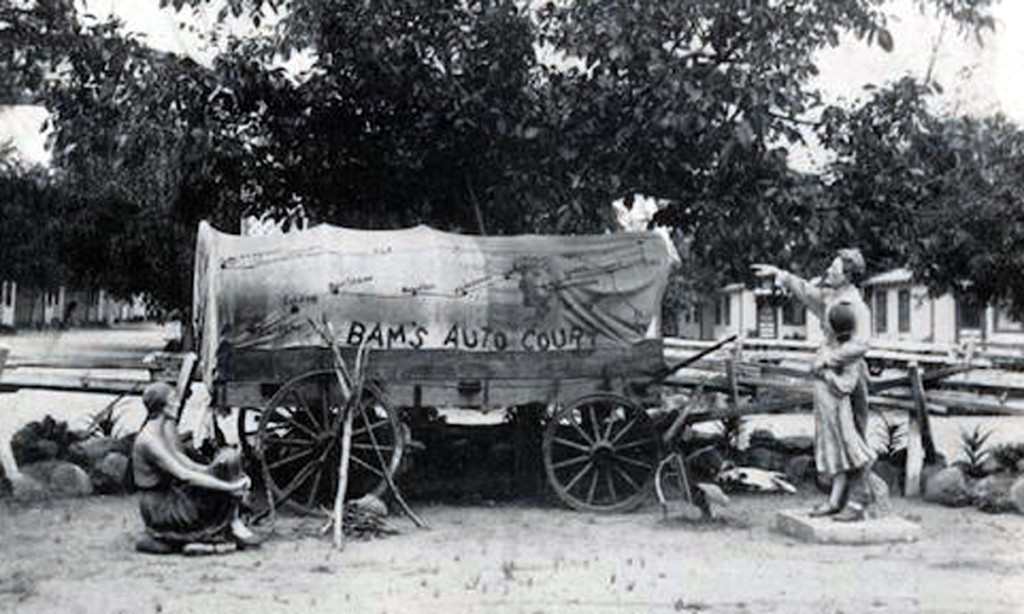 Along the Hollister Ave./ State St. corridor, lots were zoned commercial to take advantage of the increasing automobile traffic. The most memorable business to pop up was Bam’s Auto Court, for years a landmark designating the end of Santa Barbara and the beginning of the frontier called Goleta.
Along the Hollister Ave./ State St. corridor, lots were zoned commercial to take advantage of the increasing automobile traffic. The most memorable business to pop up was Bam’s Auto Court, for years a landmark designating the end of Santa Barbara and the beginning of the frontier called Goleta.
 His original plan was for Argonne Circle to be a community playground, but the neighborhood was too popular and it too was eventually subdivided and filled with homes. This photo from 1940 shows a lot of empty lots, but by the mid 1960s it was full.
His original plan was for Argonne Circle to be a community playground, but the neighborhood was too popular and it too was eventually subdivided and filled with homes. This photo from 1940 shows a lot of empty lots, but by the mid 1960s it was full.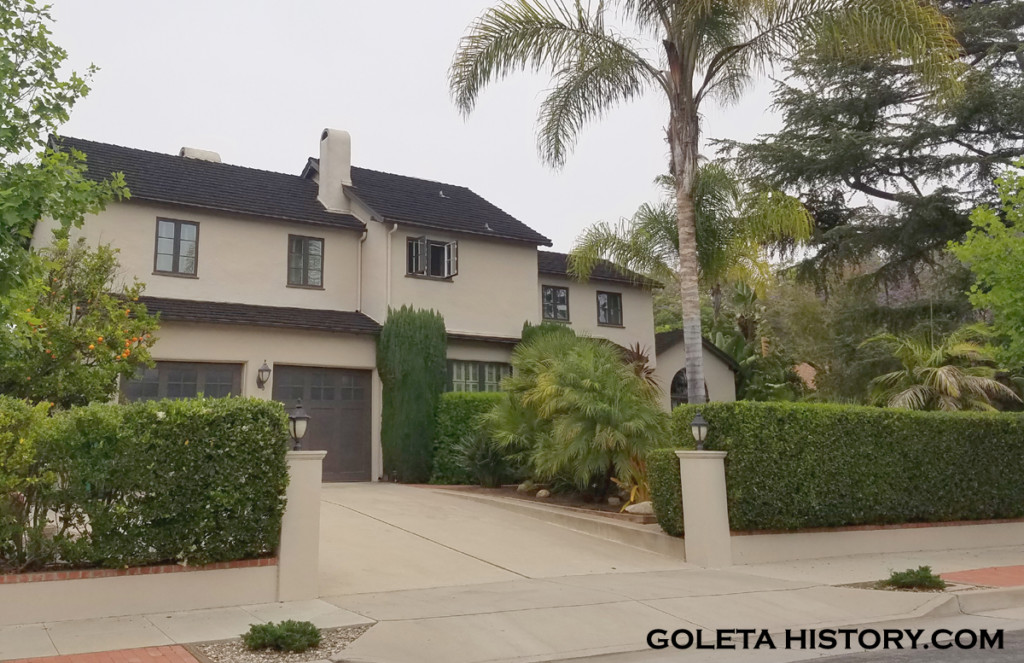 He made his home on Calle Palo Colorado, named for the redwood tree planted in his front yard. This house also still exists. During his final years, Stephen watched his Rutherford Park being filled with upper middle class homes that influenced the development of the neighboring San Roque Park district. And there he died June 19, 1939, at age 91. At the time of his death some of the lots remained unimproved, but they soon filled up and it is a very desirable neighborhood to this day.
He made his home on Calle Palo Colorado, named for the redwood tree planted in his front yard. This house also still exists. During his final years, Stephen watched his Rutherford Park being filled with upper middle class homes that influenced the development of the neighboring San Roque Park district. And there he died June 19, 1939, at age 91. At the time of his death some of the lots remained unimproved, but they soon filled up and it is a very desirable neighborhood to this day.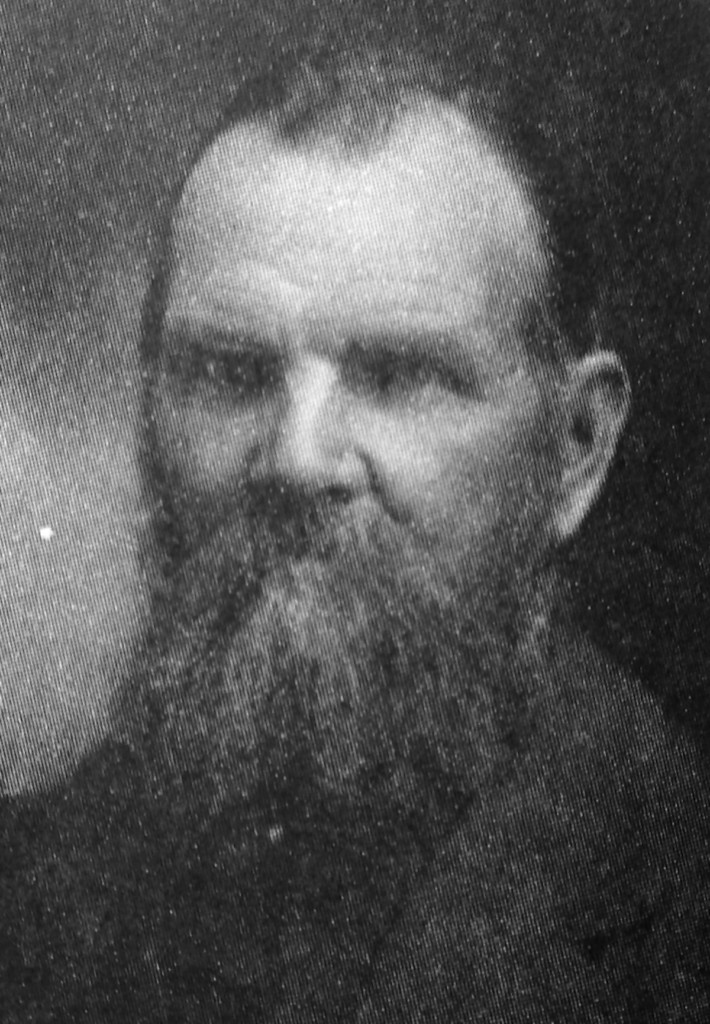 Stephen Rutherford was a hardworking farmer and a shrewd investor. He embodied the American Dream, and his influence was felt from Refugio Cove to downtown Santa Barbara. His legacy lives on, not just through a street name in Old Town, but also through the neighborhood he created and the successful family he started.
Stephen Rutherford was a hardworking farmer and a shrewd investor. He embodied the American Dream, and his influence was felt from Refugio Cove to downtown Santa Barbara. His legacy lives on, not just through a street name in Old Town, but also through the neighborhood he created and the successful family he started.
Sources: Monroe Rutherford, The Rutherford family, Santa Barbara Historical Museum, Michael Redmon, Walker Tompkins, American Oil and Gas Historical Society, Goleta Valley Historical Society, Neal Graffy, Kellam de Forest
Categories: Goleta History
Another triumph of historical insight. Thanks Tom. BTW the picture of Stephen at left looks a tad like Kevin Costner to my eye. What do you think?
My great-grandfather. And the little cottages at Refugio were, I believe, built by his oldest grandson, Nelson Rutherford. I am one of a very large number of direct descendants. My mother is in that family photo. I inherited an old suitcase of family photos. Some taken at the beach at Dos Pueblos before the railroad went through; as well as some taken early-on on Calle Palo Colorado. Thanks. Fun to read.
Thanks Jane. Would love to see those old photos!…..
From 1981 to 1989 I was a neighbor of Nelson Rutherford on Lincoln Rd off of Hope Ave. He was a wonderful, kind and interesting man, and much loved by the neighborhood. I wish I had spent more time with him – he always had interesting stories about the area.
Hi, Tom:
You briefly mentioned Bam’s Auto Court, and I had a flashback of when my family first moved here in 1962 or ’63. Bam’s was our first home for not very long, we were 7 kids and my parents, it was all they could afford at the time. I was only 8 years old at the time, so my memory is hazy, but I remember it was a pretty rough and tumble place.
Luckily we were able to move into a brand new home on Calle Alella on the Mesa, then to a house on Shoreline. That was before the park was put in, and Shoreline was a dead end street at both ends (La Marina and Salida Del Sol.)
Thanks for the memory jog.
Haha, rough and tumble! The good old days.
I have always wondered about some graduation documents I have from my grandparents of their graduations from “Grammer School of Den District”
Lawrie Rutherford’s is dated 1908 and Alice Rutherfords is dated 1898
Alice (Allison) Rutherford is my paternal grandmother having married John A Seagoe, my grandfather. Interested in the connection to the story of Nicolas Den and this school district, most likely named after him.